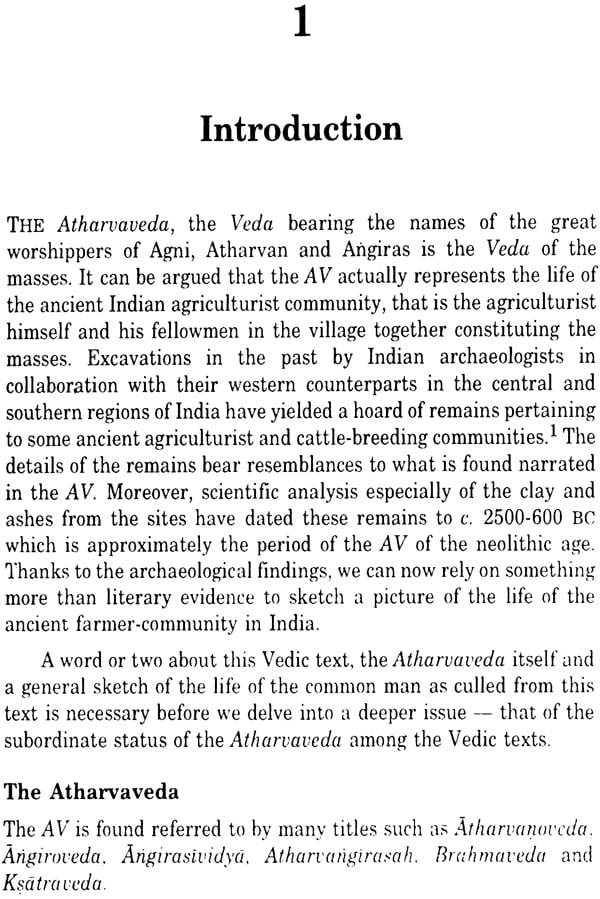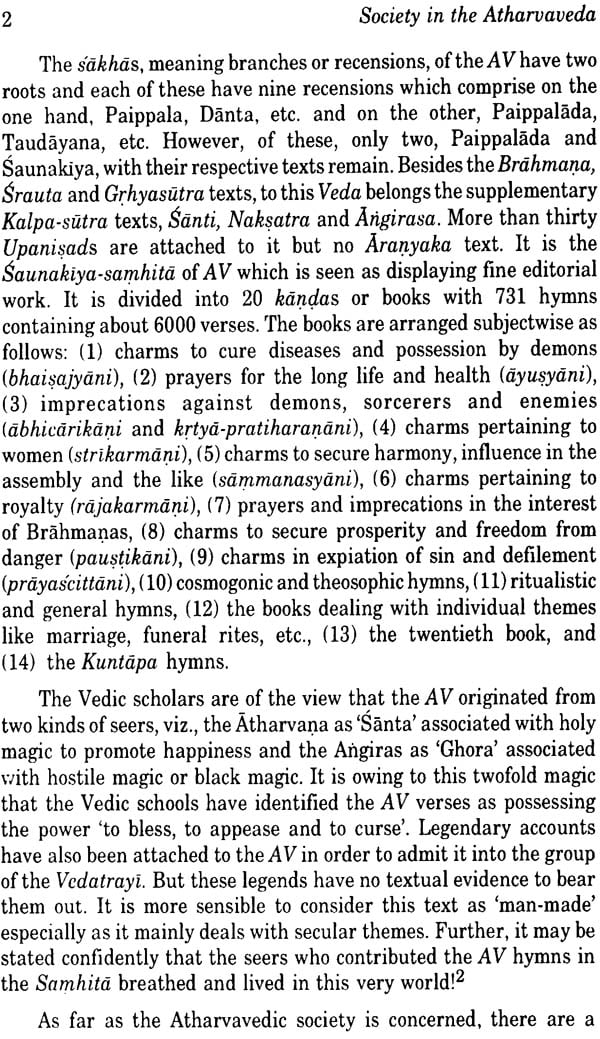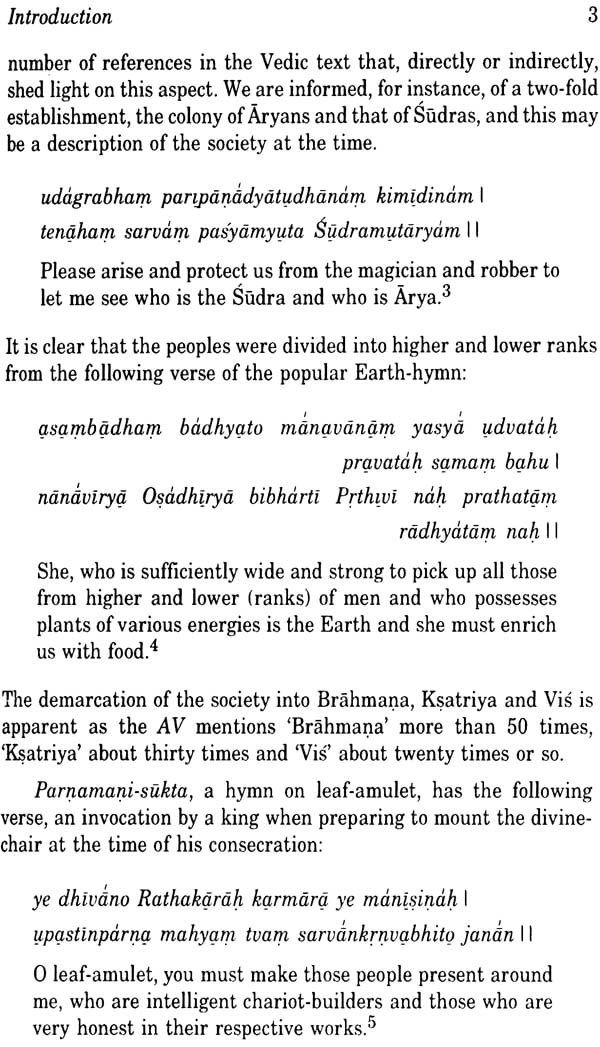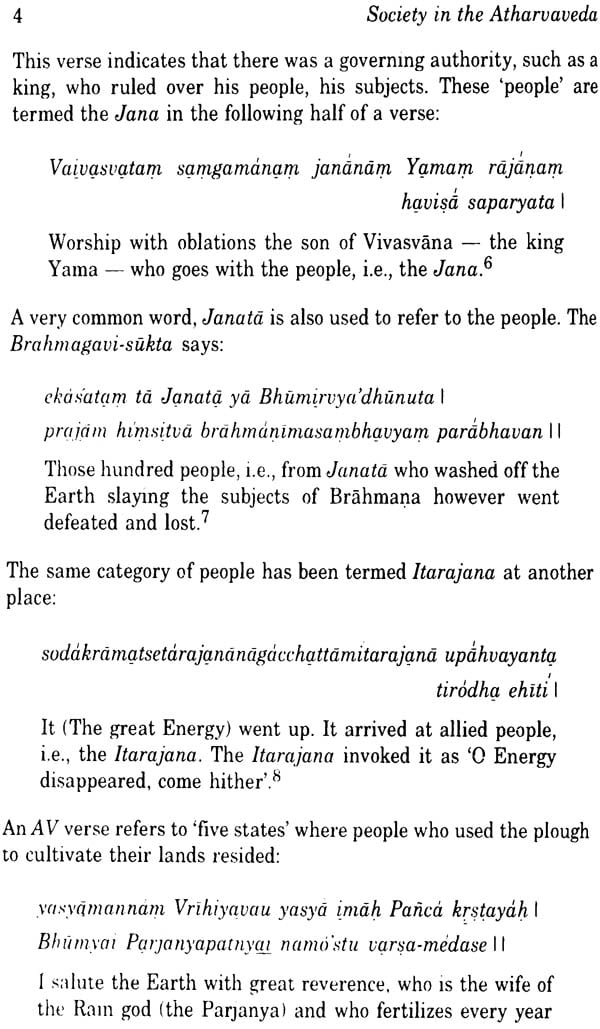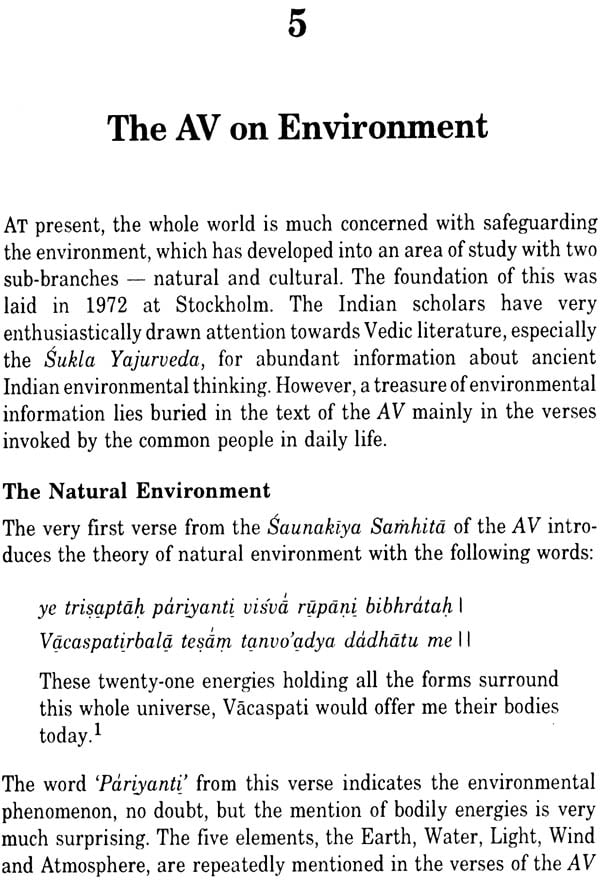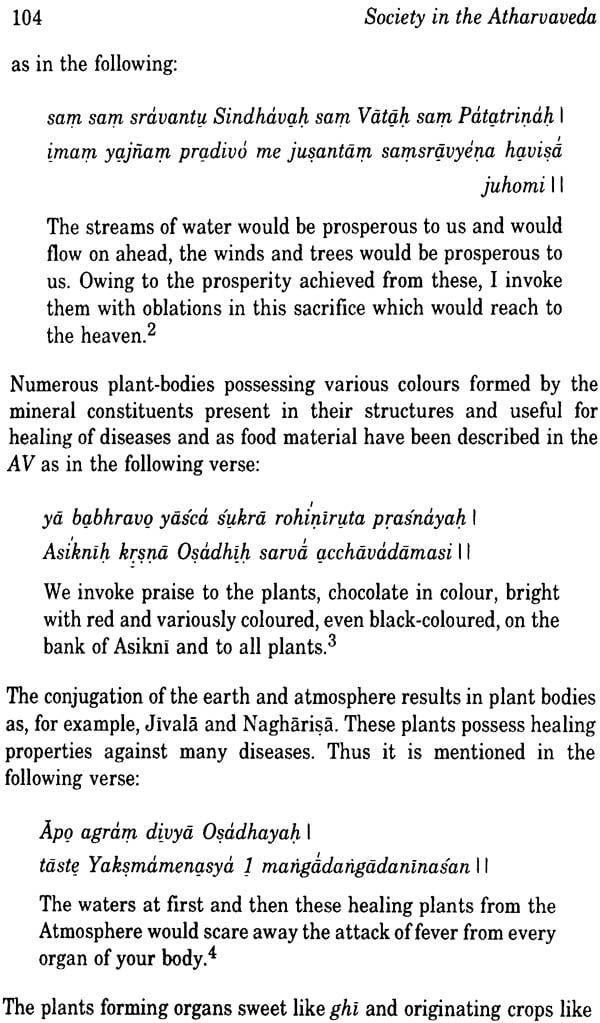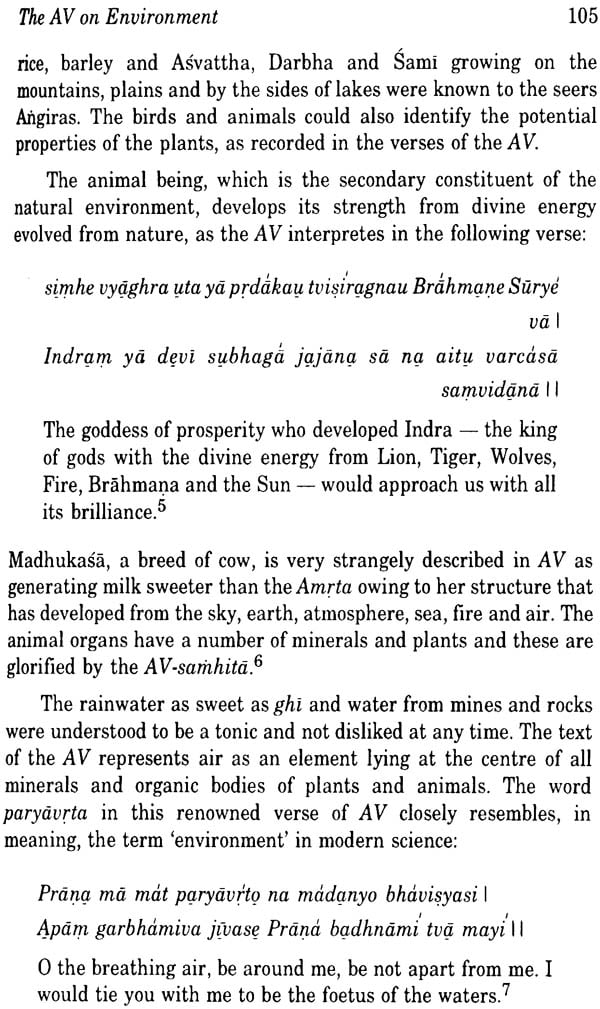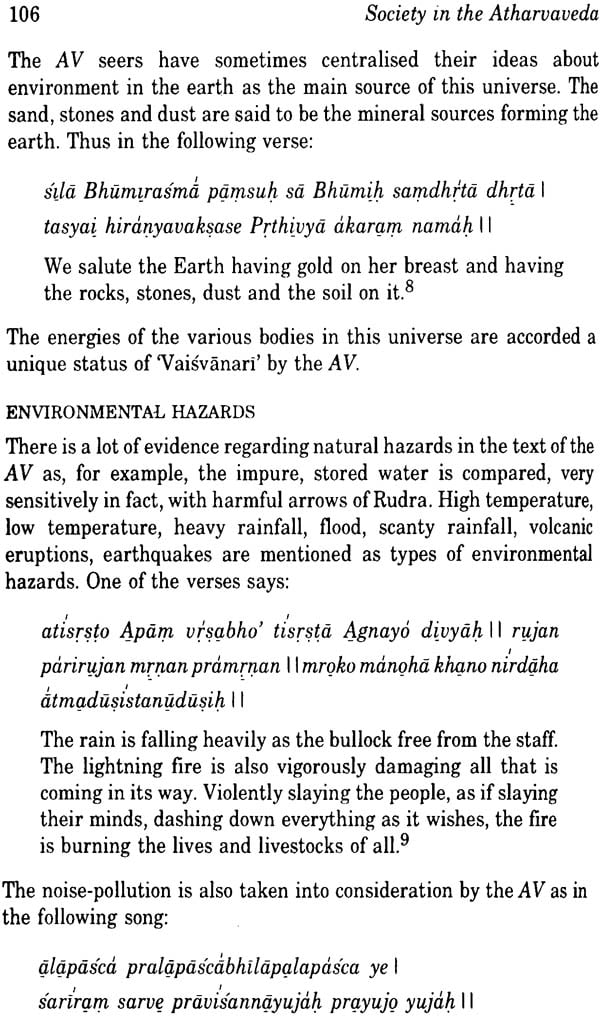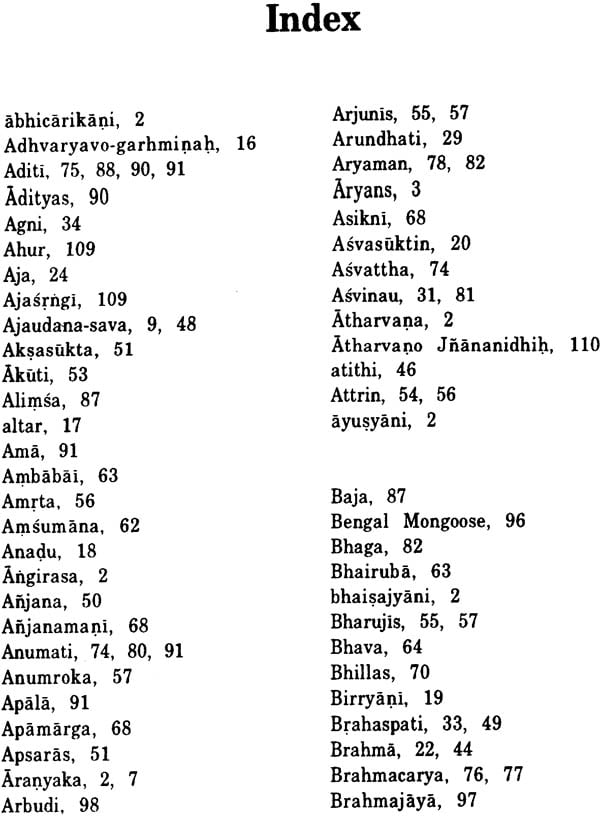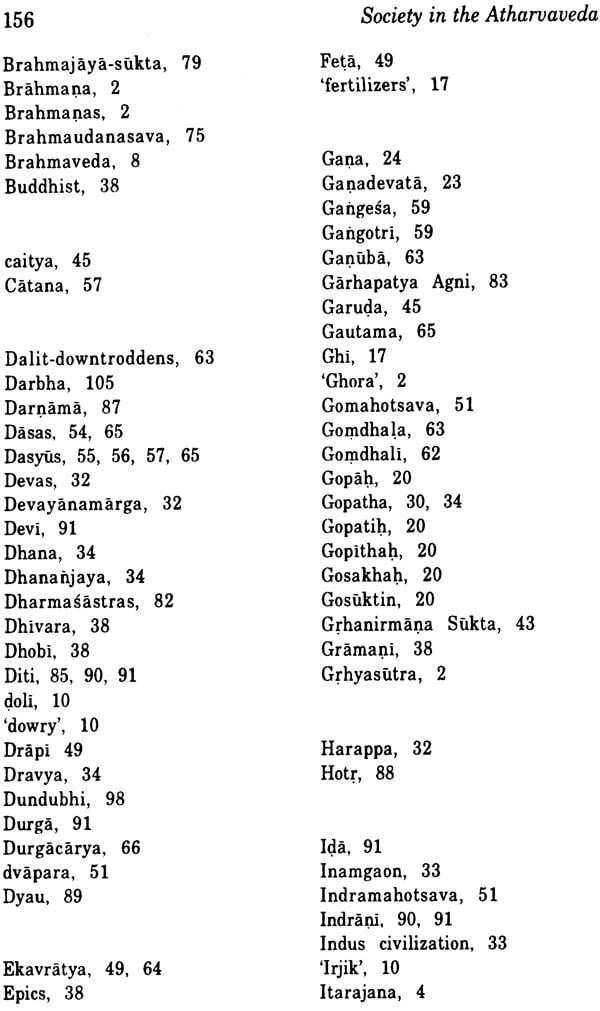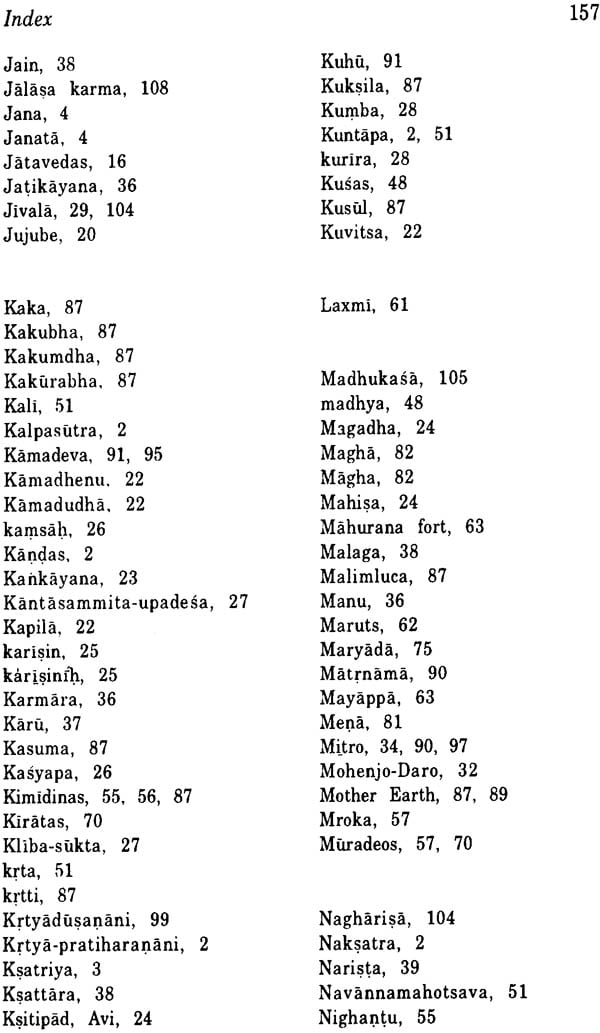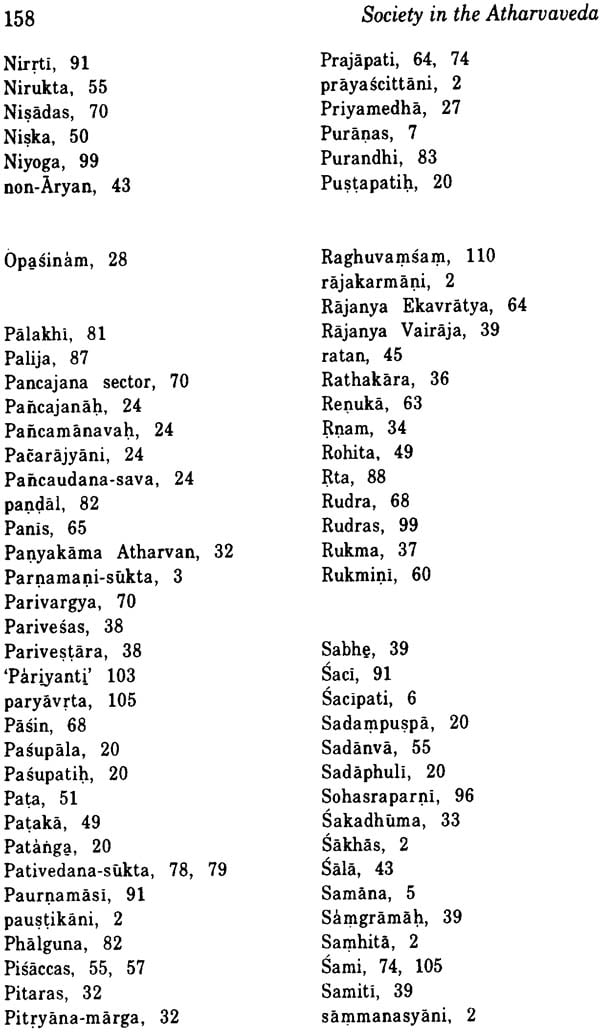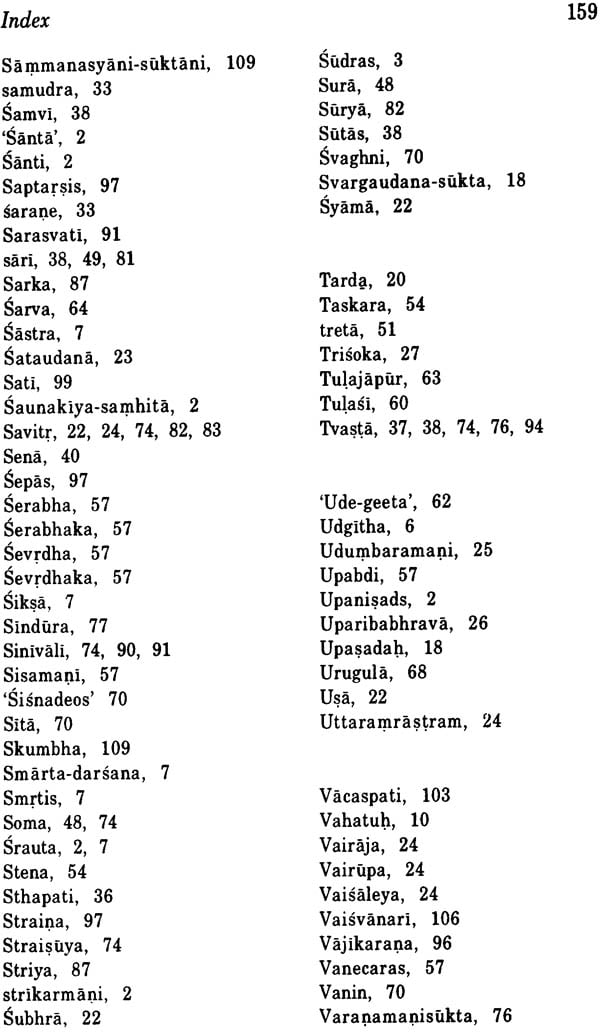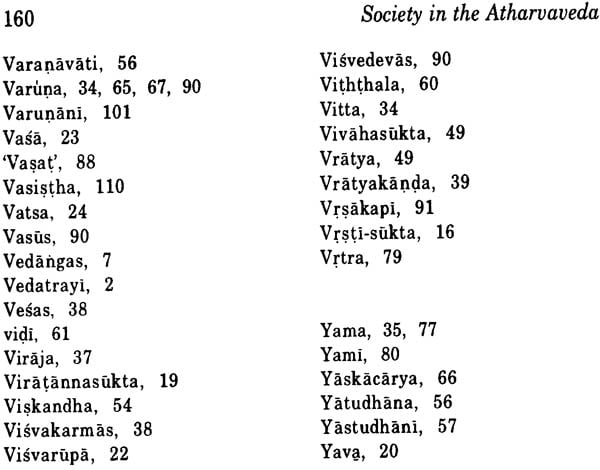
Society In the Atharvaveda
Book Specification
| Item Code: | IDD105 |
| Author: | B.S. Kharade |
| Publisher: | D. K. Printworld Pvt. Ltd. |
| Language: | English |
| Edition: | 1997 |
| ISBN: | 8124600937 |
| Pages: | 176 |
| Cover: | Hardcover |
| Other Details | 8.8" X 5.6" |
| Weight | 350 gm |
Book Description
Of the Vedas the Atharvaveda, the Veda of the masses, is unique. Unlike the Rg. Sama and Yajur Vedas, the Atharvaveda delineates the life of the common man in the ancient Indian village community the village farmer, craftsman and others who formed the core of the agriculturist society of the time. Modern scholarship has focused much on the vedatrayi but little has been written on the Atharvaveda.
Society in the Atharvaveda not only attempts to address the dearth of scholarly studies on the Atharvaveda but it is also perhaps, in recent years, the first ever study of the Atharvaveda from the point of view of the common people. The Atharvaveda verses throw light upon a wide range of themes and all these are discussed here: topics from farming and cattle breeding, village crafts, religion, daily preoccupations and fashions of the people, role of women and their problem in day-to-day life, crime and degenerative practices like adultery and gambling, to trade and travel means and routes, loan facility, taxation, political administration and man's response to his environment. The author traces this Veda as the source of many traditional folk songs that are sung even today by the common man at work in the villages. This systematic survey dispels the widespread notion that the Atharvaveda is subordinate to the vedatrayi; rather the author shows that it occupies an unrivalled importance in Vedic literature largely owing to its preoccupation with the life of the people at large.
The book abounds with Atharvavedic verses; a number of verses are cited to bring out each and every aspect of common life and living. With meaningful appendices, this scholarly work would provide interesting and useful research and reference material to Vedic scholars especially those keen on studying the 'Veda of the masses; in a fresh perspective.
Born in a hard-working family Dr. B.S. Kharade got his primary education in a village of Maharashtra state and a Ph.D from Shivaji University, Kohlapur, Dr. Kharade has been awarded medal for being the first scholar studing the Veda with agricultural point of view. Having a background of an agriculturist family, he has extensively studied the Athrvaveda focusing on the life of agricultural community. Presently he is a Reader of Sanskrit in the Arts and Commerce College at Satara.
The Vedas are together a bounty of intense and meaningful observations, gems of thought that are as profoundly significant today as they were in times of yore. These ancient texts of Indian heritage have a significance that well extends beyond the religious and philosophical contexts for there is a vast range of areas on which they shed light. One of their most valuable contributions has to do with the evolution of society: there are a number of references in the Vedic texts that taken together depict the life and times of the people at large. It is here that the Atharvaveda is of the greatest importance, for it is essentially the Veda concerned with the life of the common people.
The Atharvaveda, referred to as the fourth Veda, is said to be a later addition to the 'Vedatrayi' the Rg, Sama and Yajur Vedas. Its 731 hymns hardly resembles those in the 'Vedatrayi'. Unlike these three Vedas, the Atharvaveda is largely concerned with knowledge of ghosts, gnomes and magical formulae. All these factors have had their share in contributing to the subordination of this Veda to the others. Most of all, it may be because the Atharvaveda concerns itself with the ways and customs of common man the ordinary village farmer, craftsman and others, and their families. But I believe that it is this factor in particular that accentuates the importance of this Vedic pothi, and so, my attempt there has been to lay bare various aspects of society in the Atharvavedic time as reflected in the Atharvaveda that deals with even the minutest of details with gravity.
In this book, I have dealt with a range of areas: the Atharvavedic people's technique of farming and breeding cattle; the village artisans specialized in various crafts; trade at the time and travel means and routes, the various tribes/people that interacted with each other in society; political administration; daily preoccupations and fashions of the layman and his wife; bad practices such as gambling and adultery; and his wife; bad practices such as gambling and adultery; and so on. I have undertaken a brief and interesting discussion to show how this Vedic text is truly the foundation of source of many traditional folk songs that are sung even today by the common man at work in the villages. A chapter is given to analyse the status and role of women as apparent in the Atharvavedic verses. The last chapter discusses how the people of the AV time viewed and responded to their environment an area which has emerged as a field of specialized study in recent years.
Modern scholarship has largely focused on the 'Vedatrayi' and writings on the Atharvaveda are few. Modern scholars' interpretation of the AV is clearly from a perspective which is the traditional mode of interpreting the AV. I believe that it is high time scholars study the Atharvaveda for what it really is a wealth of information about the life of the people at large, the masses and accord due status to it. My work is a humble effort in that direction.
In course of writing this book, I was aided by many persons who extended to me persistent guidance and warm encouragement. I would like to mention, in particular, Dr. V.B. Inamadar, Professor in Sanskrit and Sanskrit-Pandit (Maharashtra-state) whose kind guidance and blessings encouraged me to write this book. I owe a deep sense of gratitude to my path-maker and guide, Dr. A.H. Salunkhe, Dean, Arts Faculty, Shivaji University, Kolhapur, Maharashtra and late Shri S.V. Kukarni who is responsible for strengthening my foundations in Sanskrit studies. I am thankful and highly indebted to my family members and relatives for their unmatchable support and patience while I was preoccupied with this work. I would also like to thank D.K. Printworld (P) Ltd. For their keen interest in publishing this work.
| Preface | vii | |
| Abbreviations | xiii | |
| Transliteration Chart | xv | |
| 1 | Introduction | 1 |
| THE ATHARVAVEDA | ||
| RELEGATION OF THE AV | ||
| Literature in the Old Age (2500-0 BC) Literature in the Middle Age (AD 1-1700) Literature in the Modern Age (AD 1701-1990) | ||
| 2 | Economic and Political Life | 13 |
| AGRICULTURE | ||
| Land Under Cultivation Water Supply Ploughing of Land The Harvest | ||
| CATTLE-BREEDING | ||
| The Animals Management of Cattle Farms Precautions in Cattle-breeding | ||
| TRADE | ||
| Travel Routes and Means | ||
| THE LOAN FACILITY | ||
| TAXATION | ||
| THE VILLAGE CRAFTSMAN | ||
| The Architect/Housebuilder Carpenter, Blacksmith, Goldsmith, Sculptor The Weaver | ||
| OTHER WORKERS | ||
| THE POLITICAL INSTITUTIONS | ||
| Sabha: The Assembly Samiti : The Legislative Council | ||
| 3 | Social Life | 43 |
| THE HOUSE | ||
| Housebuilding Decoration and Prosperity | ||
| FOOD AND DRINKS | ||
| CLOTHES, HAIRSTYLE AND MAKE-UP, ORNAMENTS | ||
| FAIRS AND FESTIVALS | ||
| BAD HABITS AND PRACTICES | ||
| Gambling Use of Abusive Language Adultery - Miserliness | ||
| VIOLENCE IN SOCIETY | ||
| Theft or Robbery To Beat, Slaughter or Ravage Threatening, Terrorism, Kidnapping Poisoning - Punishment | ||
| RELIGION AND WORSHIP | ||
| FOLK LITERATURE AND SONGS | ||
| INTERACTION BETWEEN VARIOUS GROUPS | ||
| The Vratyas The Panis Dasas and Dasyus - Others | ||
| 4 | Feminine Life | 73 |
| BIRTH OF A GIRL | ||
| FROM CHILDHOOD TO MARRIAGE | ||
| MARRIAGE SETTLEMENT | ||
| MARRIAGE CEREMONY | ||
| PROBLEMS BEFORE A NEWLY-MARRIED WIFE | ||
| THE WOMAN'S WORK | ||
| MOTHERHOOD | ||
| Pregnancy Delivery Maternal Love - Barrenness | ||
| MATRIARCHY | ||
| POLYGAMY | ||
| RELATION BETWEEN MAN AND WOMAN | ||
| Subduing by Charms Amorous Desire | ||
| WIDOWHOOD | ||
| THE PROBLEM OF ABANDONMENT | ||
| 5 | The AV on Environment | 103 |
| THE NATURALENVIRONMENT | ||
| Environmental Hazards Protection from Hazards | ||
| THE CULTURAL ENVIRONMENT | ||
| Cultural Pollution and the Remedy | ||
| Appendices | 115 | |
| 1 | Vedic Mantras in Sanskrit Literature | 116 |
| THE OLD AGE (2500-0 BC APPROXIMATELY) | ||
| 2 | Vedic Mantras in Sanskrit Literature | 134 |
| THE MIDDLE AGE (AD 1-1700 APPROXIMATELY) | ||
| 3 | Subjectwise Contribution of the AV Seers | 138 |
| 4 | India in the Atharvavedic Time Some Rivers, Regions and Tribes | 146 |
| Bibliography | 147 | |
| Index | 155 |
